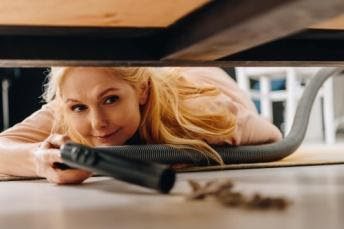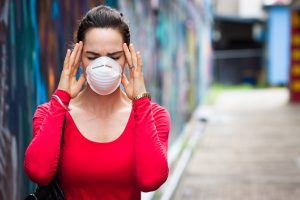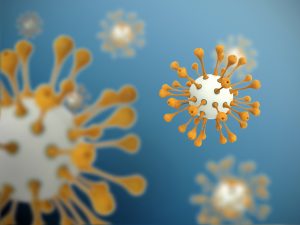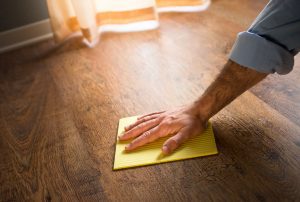After your fabric is cleaned, it will need to be protected. Fabric Protector keeps your fabric clean longer and helps avoid permanent staining. Don’t leave your fabric unprotected. The protector will be sprayed evenly on all the fabric, then brushed in. It then “wicks” into the fibers of the fabric creating a protective barrier against soil and stain. Your next cleaning will be more effective as the protector will “en-capsule” body oils and soils that accumulate on the fabric. When it is cleaned, more soil will be removed as a result of the treatment.
Treated Upholstery will: Last longer, look better and keep looking new.
Fabric Protection Treatment
- Has no smell and is non-allergenic
- Does not change the look or feel of the fabric
How to Care for Your Upholstery and Draperies
- Rotate all loose cushions frequently to ensure even wear.
- Vacuum dust and dirt from all fabric, cracks and crevasses.
- Fabric protection is the best possible way to extend the life of your upholstery.
- Vacuum often to reduce grit that can cause abrasion.
- Reverse loose cushions weekly for even wear.
- Protect from the sun. Ultraviolet light can cause deterioration.
- Keep pets off furniture. Pet’s body oils rub off and are very difficult to remove.
- Use caution with clothing such as Blue Jeans. Fabric dyes can transfer onto upholstered furniture.
- All upholstered furniture will become soiled through use. Most spills and soil on upholstery that has fabric protection will clean easily and quickly provided the proper cleaning procedures are followed. A fabric protector application is not an absolute impenetrable barrier and improper cleaning methods can damage both the fabric and the treatment.
- Blot (don’t rub) spills immediately with a clean absorbent cloth while the spill is still fresh. Dried spills are more difficult to remove.
- Identify the cleaning code for your type of fabric. This determines what type of cleaning agent to use.
- Always read and follow the instructions on the cleaning agent.
- Use distilled water with the cleaning agent if water is called for.
- Pre-test any cleaner on any fabric in a hidden area. Check for color-fastness and fabric compatibility.
- Keep a small spill small. Work lightly, blotting from center to the edges. “Feather” the edges by dampening edges irregularly and blotting quickly to avoid rings.
- Quickly dry a cleaned spot using a small fan or blow dryer on low.
Cleaning Codes
- Spot clean with water based shampoo or foam upholstery cleaner.
- Spot clean with a water-free cleaning solvent.
- Spot clean with upholstery shampoo, foam from mild detergent, or a mild dry cleaning solvent.
- Clean only by vacuuming or light brushing with a non-metallic brush. Do not use water or dry cleaning solvents.
Always pre-test for color loss and fabric compatibility. Do not over-wet! Always call Buddy for a professional cleaning or if you have any questions!
 About 60% of dust comes from outside. Soil, Pollen and other outdoor containments can come inside on your shoes, clothes, even your hair. The other 40% come from dust mites (the more dust you have the more dust mites you have), pet dander, dead skin, food debris, insects and insect droppings, lead, arsenic and DDT.
About 60% of dust comes from outside. Soil, Pollen and other outdoor containments can come inside on your shoes, clothes, even your hair. The other 40% come from dust mites (the more dust you have the more dust mites you have), pet dander, dead skin, food debris, insects and insect droppings, lead, arsenic and DDT.


